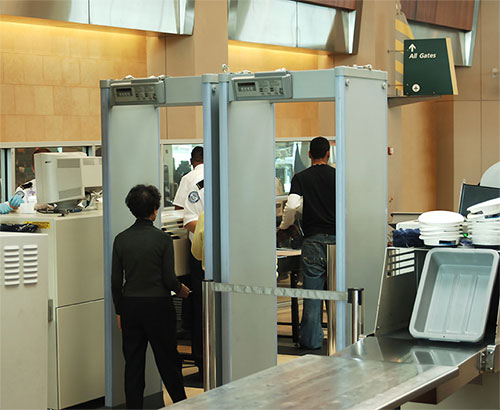
TSA Attempting to Speed Up Airport Security Lines
- By Ginger Hill
- Jan 15, 2014
 To be honest, and knock on wood, I’ve never experienced an unbearable situation in the airport security line or with airport security in general. Yeah, sure, there has been long lines, and my feet got cold from being required to remove my shoes, and maybe it was just a little annoying when my fingers were swabbed; but, overall, I can honestly say that it hasn’t been that big of a deal. (Besides, I’d rather we have security at airports than to re-encounter an incident like 9-11.)
To be honest, and knock on wood, I’ve never experienced an unbearable situation in the airport security line or with airport security in general. Yeah, sure, there has been long lines, and my feet got cold from being required to remove my shoes, and maybe it was just a little annoying when my fingers were swabbed; but, overall, I can honestly say that it hasn’t been that big of a deal. (Besides, I’d rather we have security at airports than to re-encounter an incident like 9-11.)
But, for those who would like to skip all the airport security hoopla, as most of us know, there is the PreCheck program. This expedited security program is available in more than 100 US airports with 9 partner airlines. You simply submit to a background check, provide fingerprints, participate in an interview and pay an $85 fee, enabling you to pass through airport security checks with minimal safety checks as well as standard metal detectors instead of the full-body scanners.
The PreCheck program was TSA’s way of moving away from a “one size fits all” approach to airport security. But, now, the program has expanded to passengers who have not enrolled in the PreCheck program to help speed up the airport screening process.
TSA has adopted a policy known as “managed inclusion,” where behavior-detection officers (some with bomb-sniffing dogs) are trained to analyze the behavior of potential airplane passengers. If passengers don’t act anxious or don’t display a list of other high-risk behaviors, they can be invited by TSA agents to go through the PreCheck line, even if they aren’t enrolled in the program.
Of course, TSA administrator John Pistole defends managed inclusion, because he argues that the methods the behavior-detection officers use have been “scientifically validated.”
Since these specially-trained TSA agents get to pick and choose passengers who don’t look like a threat or exhibit certain behaviors then why even pay the $85 and take the time for background checks, fingerprinting and interviewing? (That’s my first thought anyway.)
About the Author
Ginger Hill is Group Social Media Manager.